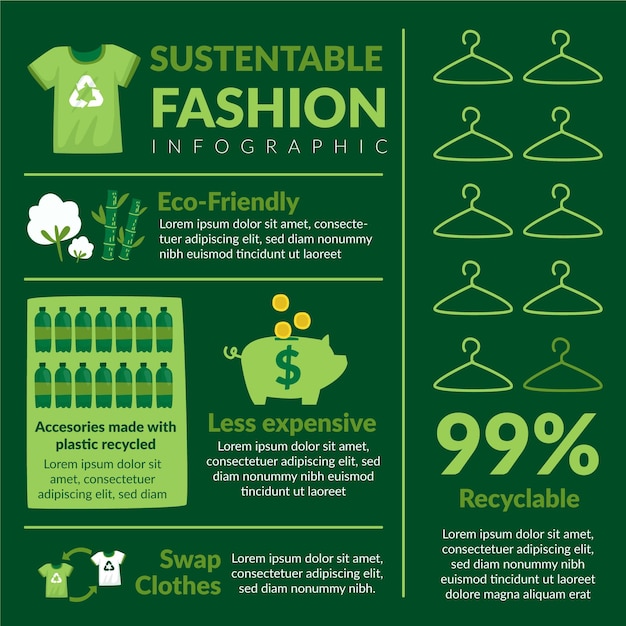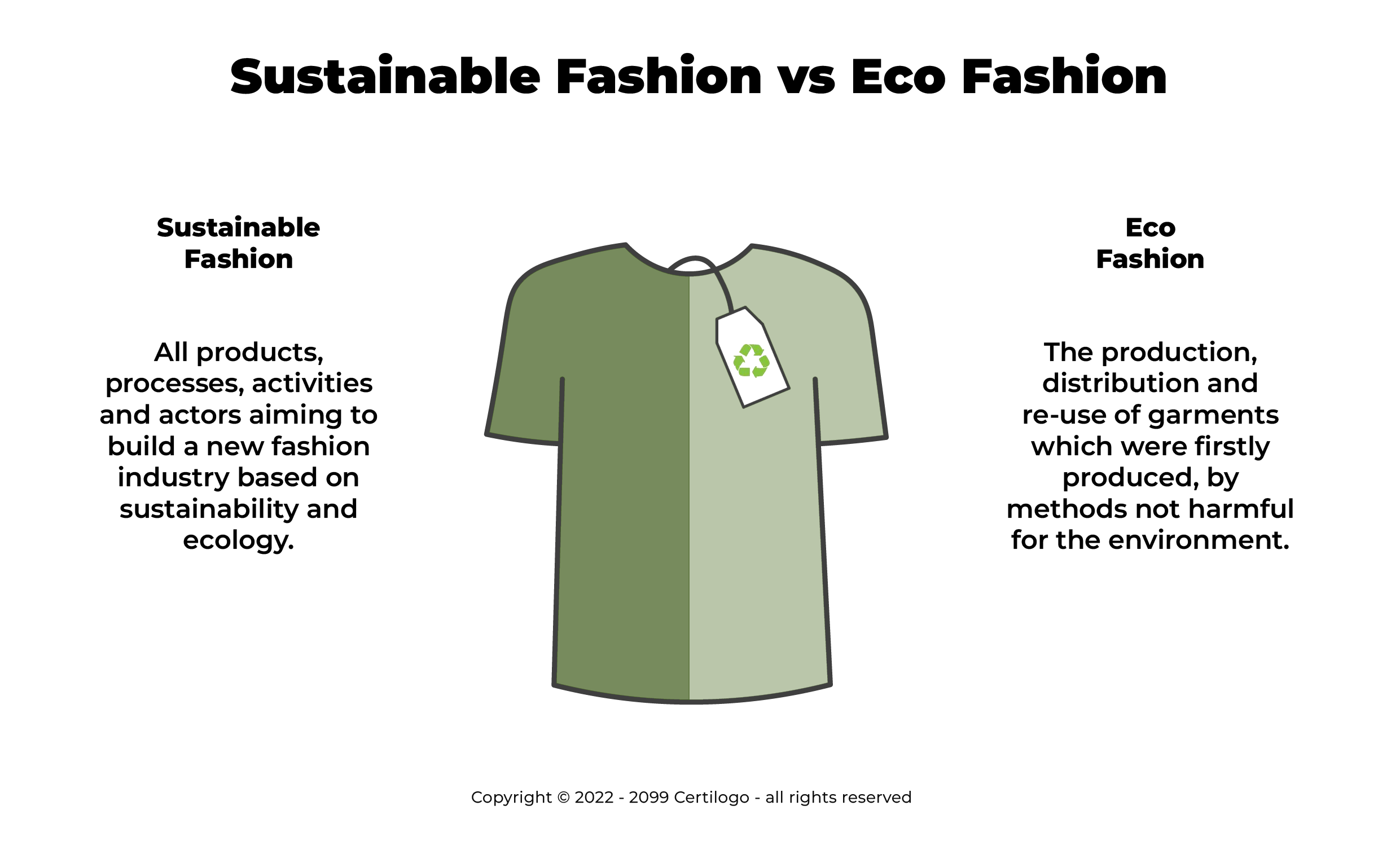Supporting Regional Cape Town Sustainable Fashion for a Greener Future
Supporting Regional Cape Town Sustainable Fashion for a Greener Future
Blog Article
Stay Ahead of the Curve by Exploring Ingenious Fashion Fads
In a sector as vibrant as style, remaining in advance entails even more than simply adhering to present trends-- it demands an exploration of technology. Smart textiles, as an example, are changing garments right into functional work of arts, while 3D printing is transforming design procedures with its customizable, waste-reducing abilities. As sustainability ends up being a keystone, innovations like environment-friendly products and round style techniques are reshaping environmental duty - Cape Town Sustainable Fashion. Furthermore, the convergence of technology and style declares a new age of customer involvement. Exactly how, then, can these arising patterns redefine the future of fashion, and what effects do they hold for brands looking for to prosper in this progressing landscape?

Accepting Smart Textiles
In the last few years, the fashion business has actually observed a transformative shift with the combination of smart textiles, a cutting-edge innovation that blends innovation with fabric. This development stands for not just a blend of aesthetics and performance yet likewise a substantial leap in the direction of sustainability and personalization in vogue. Smart textiles, also known as e-textiles, embed advanced electronics such as sensors and conductive strings within the material, making it possible for garments to interact with the user or the setting.
These fabrics are made to monitor physiological criteria, such as heart price or body temperature level, providing real-time health and wellness analytics. Past health applications, smart textiles are additionally being used for adaptive clothes, which can transform shade or pattern in reaction to environmental stimuli, therefore supplying a vibrant fashion experience.
Additionally, the advancement of energy-harvesting textiles that produce power from motion or sunshine is leading the way for self-dependent wearable innovation. This advancement is interesting environmentally aware consumers and developers intending to lower the environmental footprint of style. As r & d in this field breakthrough, clever textiles are anticipated to end up being significantly widespread, improving the landscape of modern-day style with their multifunctional capacities.
The Surge of 3D Printing
Revolutionizing the manufacturing landscape, 3D printing has emerged as a game-changer in the fashion business. This cutting-edge modern technology has actually enabled designers to press the boundaries of creative thinking, producing elaborate and tailored garments that were formerly unimaginable. By leveraging electronic design and additive production, 3D printing promotes the production of intricate geometries and patterns, enabling designers to trying out new textures and structures.
A notable advantage of 3D printing in fashion is its capability to produce on-demand, decreasing waste and decreasing inventory needs. This efficiency not only maximizes manufacturing processes yet additionally permits rapid prototyping, making it possible for designers to bring their visions to life in a shorter duration. In addition, 3D printing sustains modification somewhat unparalleled by traditional techniques, providing personalized fits and special layouts customized to private customer choices.
The surge of 3D printing has additionally democratized fashion, making it accessible to emerging developers that can currently produce high-grade pieces without significant economic investment in conventional production facilities. As technology remains to advance, the fashion business is positioned to harness the complete potential of 3D printing, discovering new products and techniques that will unquestionably redefine how style is developed and created.
Lasting Fashion Technologies
As the apparel industry faces journalism demand for environmental duty, lasting style innovations have actually arised at the center of transformative modification. The expanding recognition of ecological effect has actually fueled a shift in the direction of more eco-conscious techniques and materials. Designers and brand names are now prioritizing sustainability, integrating approaches that minimize waste and lower carbon impacts.
One significant growth is the increase of round fashion, which emphasizes recycling and upcycling to extend the lifecycle of garments. This technique not just lowers waste but also urges customers to embrace a more conscious method to garments consumption. Furthermore, the use of lasting materials, such as natural cotton, hemp, and recycled polyester, has actually gained grip. These products need less water and energy throughout production, considerably reducing ecological impact.
An additional innovation hinges on the adoption of innovative dyeing strategies that use waterless processes or all-natural dyes, thus minimizing the vast quantities of water and chemicals generally utilized in textile dyeing. In addition, innovations in biotechnology have led to the creation of lab-grown natural leather and fabrics, supplying cruelty-free and ecologically pleasant choices to traditional products. With these pioneering efforts, the fashion market is making meaningful strides in the direction of an extra sustainable future.

Tech-Integrated Apparel
Tech-integrated clothing stands for a groundbreaking combination of fashion and innovation, reshaping exactly how people engage with their clothing. This cutting-edge domain is marked by the inclusion of wise fabrics and embedded electronic components, improving both capability and aesthetic allure. From physical fitness trackers installed in sports apparel to heated coats regulated via smart device apps, tech-integrated apparel uses customers unprecedented comfort and versatility.
Pioneering brand names are driving this pattern, concentrating on producing garments that respond to ecological stimuli or customer commands. For circumstances, some garments can change shade or pattern in action to temperature shifts, while others incorporate biometric sensing units to monitor health metrics like heart price or tension degrees. The seamless integration of innovation right into textiles likewise reaches environmental sustainability, with efforts to establish self-cleaning materials or garments that adjust to climate condition, therefore decreasing the requirement for multiple layers.
Additionally, the arrival of wearable modern technology is not simply restricted to apparel yet includes accessories like watches and eyeglasses, additional widening the extent of tech-integrated style. As the market continues to innovate, the capacity for modification and navigate here personalization in apparel expands, supplying customers unique, tech-enhanced fashion experiences that cater to their individual needs and preferences.
Future of Virtual Style
Over the last few years, the future of digital style has actually emerged as a transformative force within the market, leveraging developments in digital innovation to redefine exactly how style is developed, experienced, and taken in. By incorporating enhanced truth (AR), virtual fact (VIRTUAL REALITY), and 3D style tools, developers can currently craft immersive and interactive experiences that go beyond typical style limits. Online style enables the development of garments that exist exclusively in electronic atmospheres, offering endless opportunities for development without the restrictions of physical production.
This digital shift not just presents chances for innovative expression yet also addresses sustainability issues inherent in standard style methods. Cape Town Sustainable Fashion. By getting rid of visit homepage the demand for physical resources, digital style minimizes waste and reduces carbon footprints. In addition, the rise of online style straightens with the boosting customer demand for individualized and one-of-a-kind experiences, as online garments can be customized and tailored to specific preferences with ease

Final Thought
The apparel industry's future hinge on the combination of lasting methods and ingenious technologies - Cape Town Sustainable Fashion. Smart fabrics and tech-integrated apparel are enhancing performance, while 3D printing offers opportunities for modification and waste reduction. Lasting style, through environment-friendly materials and circular methods, shows a commitment to environmental stewardship. Moreover, online fashion is poised to redefine customer communications. Adjusting to these patterns is crucial for brand names looking for to continue to be relevant and competitive in this rapidly progressing landscape.
In recent years, the style market has actually observed a transformative change with the integration of clever textiles, a cutting-edge development that blends modern technology with fabric.As the fashion industry grapples with the pushing requirement for environmental duty, sustainable style innovations have arised at her latest blog the forefront of transformative modification.In recent years, the future of online style has actually arised as a transformative force within the industry, leveraging developments in electronic technology to redefine how style is created, experienced, and eaten. The surge of digital fashion lines up with the enhancing consumer demand for individualized and special experiences, as digital garments can be tailored and tailored to private choices with convenience.
The style market's future lies in the integration of cutting-edge modern technologies and sustainable practices.
Report this page